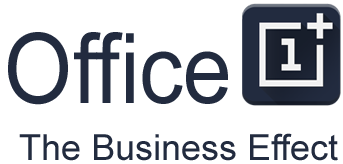
As technology continues to evolve and artificial intelligence becomes smarter, businesses, organizations, and individuals are turning towards digital transformation in order to keep pace with the evolving business environment. The potential for cutting costs, saving time, and boosting production is hard to ignore. However, with any type of transformation, there can be growing pains and questions. What exactly is “digital transformation” and how will it affect you? This article will shed light on this topic and help you gain a better understanding of what going digital means and how it is done.
Table of Contents
A Forced Digital Transformation
The COVID-19 pandemic forced millions of businesses to shift their organizational structure to give way for remote work. Although the conditions that drove this transformation are grim it is a perfect example of what digital transformation means. Transforming your business to operate in silo digitally by way of moving all physical, analog and resources into data points. Enabling operations to exist for all teams — wherever they are.
What Digital Transformation Means
Digital transformation is ultimately the move from a physical process to a digital process, removing the manual aspect associated with a business function. In simple terms, a computer, a monitor, and a software program such as Word allow you to create a digital document on your hard drive and save it. One step further is to scan a handwritten document into your computer and save it as a digital document. This is one form of digital transformation. Examples of items that can be digitized are:
- Paper mail
- Records
- Workstations
- Meetings
- Court proceedings
As long as the users have the appropriate hardware, and software to connect to a centralized software service the possibilities are endless.
Digital Transformation and Software as a Service
Software as a service, also known as Saas, is when a developer creates a software package that works from a central location where users from all over the world can access it. The developer may charge a monthly subscription fee for the software, or sell a license to use it. The SaaS platform is one of the major components that allow businesses to connect and do business as usual remotely. SaaS applications can vary in uses and types. For example, the Zoom platform that many professionals have turned to in order to facilitate online meetings is a type of SaaS. Data can be stored and secured on a centralized server where users can access it and use it as needed.
Mailroom Digital Transformation
Millions of businesses around the world have transformed their physical mail processes into a digital mail process by creating a digital mailroom. The way that it works is that the business will make their physical mailing address one that goes directly to a secure third-party digital processor that receives the mail and processes every piece that comes in. Each piece of mail will be opened, scanned, tracked, then sent to the proper person via email. This is all possible by way of a centralized software application that both the mailroom party and the business party have access to. Every piece of mail can be tracked and accounted for from the post office to the mailroom, and throughout the delivery system. Digitized mail cuts down on the spread of germs, overall costs, and resources. It also makes the whole mail operation safer and more secure.
Is Digital Transformation Right for You?
Not everybody is ready for digital transformation. However, not optimizing your business for the remote work landscape could mean your organization will be left behind. Knowing your options and having the right digital resources can put you in a better position to make an educated decision on whether it is time for you to make that choice. Do your research and find what works best for you. However, always keep in mind that technology is rapidly becoming dominant in the business world. Don’t wait too long.
